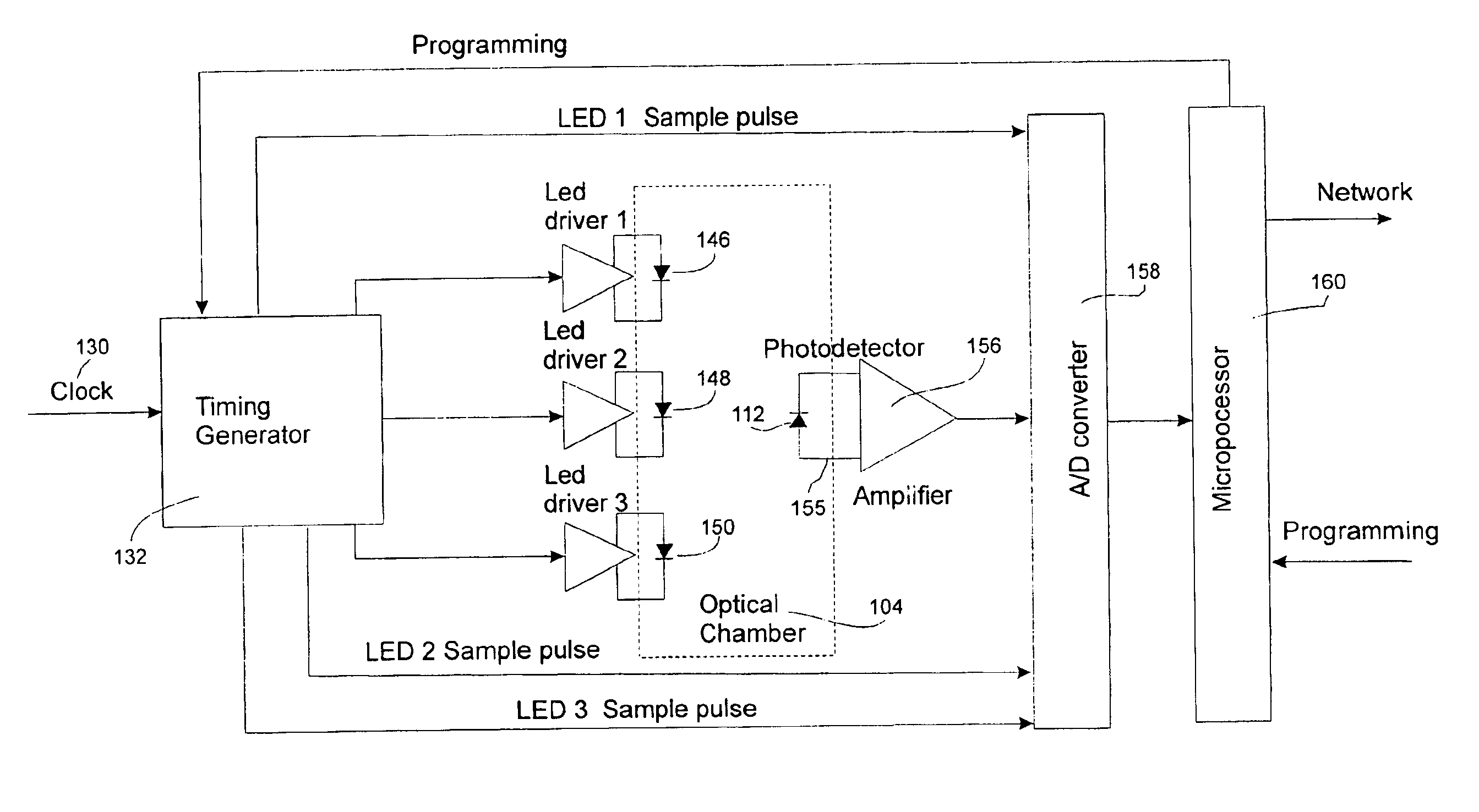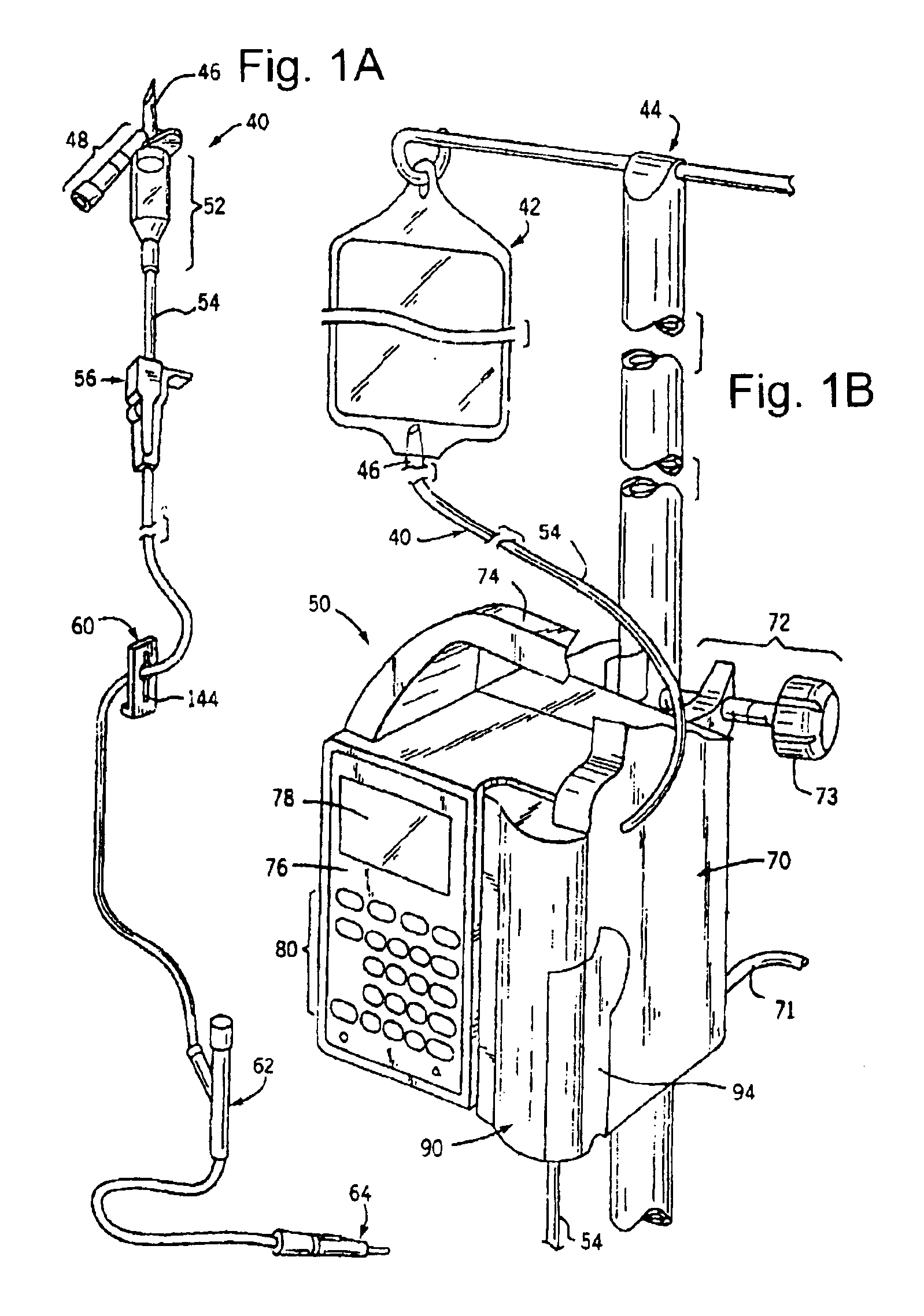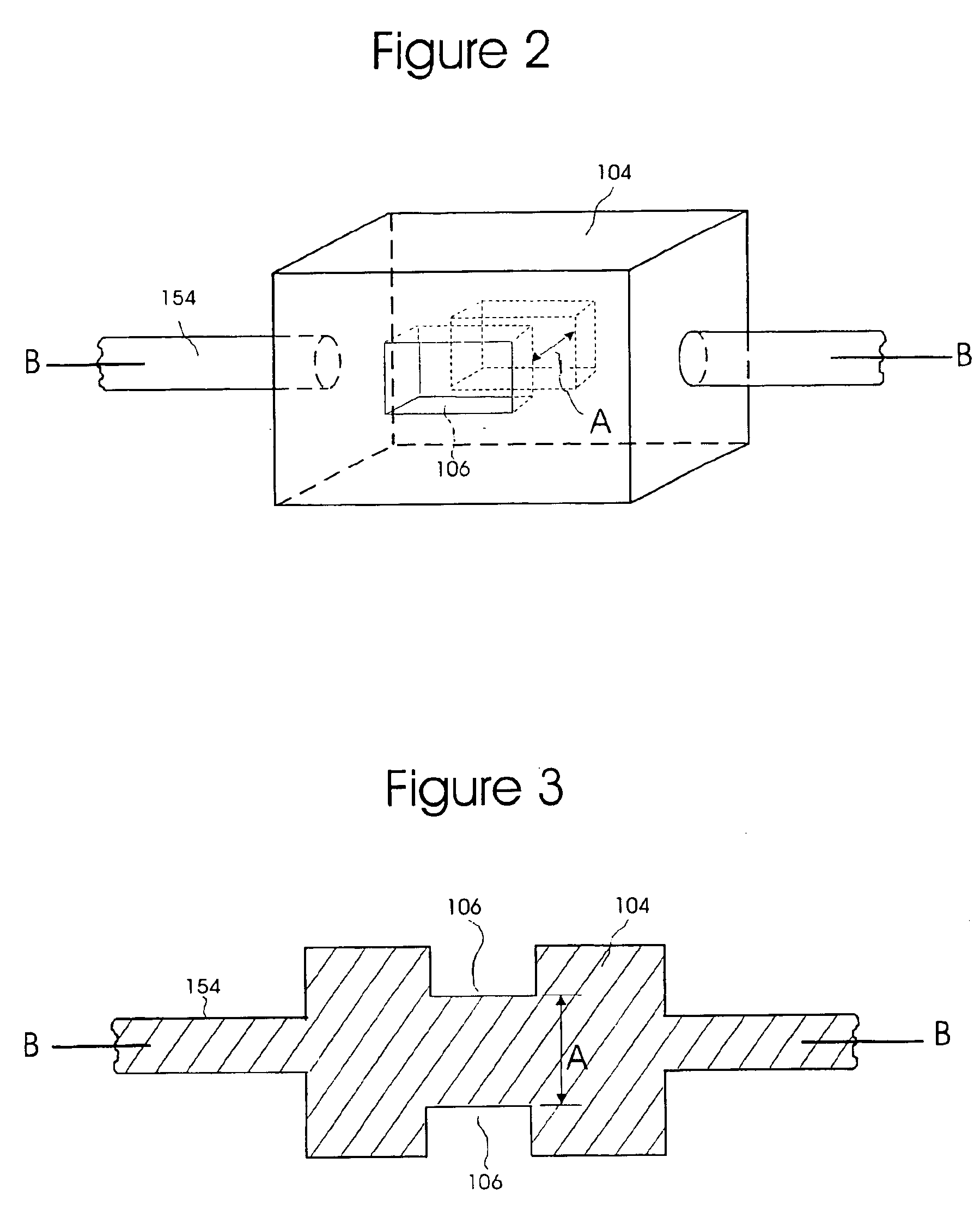Device and method for qualitative and quantitative determination of intravenous fluid components
a fluid component and qualitative and quantitative technology, applied in the field of devices and methods of preventing medication errors, can solve problems such as operator errors, wrong rate and concentration errors, and serious problems such as errors, to achieve the effect of reducing or eliminating errors, improving care, and increasing deterren
- Summary
- Abstract
- Description
- Claims
- Application Information
AI Technical Summary
Benefits of technology
Problems solved by technology
Method used
Image
Examples
Embodiment Construction
Two examples of the present invention are discussed below in connection with FIGS. 1-11. The first example uses a three LED array to check for the presence of morphine HCL. It is discussed with reference to FIGS. 1-7. Morphine is used as an example because the JCAHO has identified narcotics as one class of agents involved in a significant number of medication errors. The embodiment in FIGS. 1-7 might be used, for example, in Patient Controlled Analgesia (PCA) pumps. PCA pumps are dedicated for use typically with one of three narcotics: morphine, dilaudid, or demerol. An LED-based system for this application would be inexpensive and would be able to qualitatively and quantitatively function with a minimum of spectral data points. The second example, in FIGS. 8-11, utilizes a photodiode array collector and IR broadband emission source. This arrangement could be employed for a system that processes a large number of different pharmaceutical compounds. It could be updated by the inputti...
PUM
 Login to View More
Login to View More Abstract
Description
Claims
Application Information
 Login to View More
Login to View More - R&D
- Intellectual Property
- Life Sciences
- Materials
- Tech Scout
- Unparalleled Data Quality
- Higher Quality Content
- 60% Fewer Hallucinations
Browse by: Latest US Patents, China's latest patents, Technical Efficacy Thesaurus, Application Domain, Technology Topic, Popular Technical Reports.
© 2025 PatSnap. All rights reserved.Legal|Privacy policy|Modern Slavery Act Transparency Statement|Sitemap|About US| Contact US: help@patsnap.com



